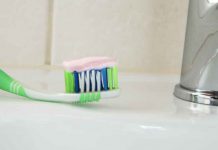Despite the fact that regular dental care may represent significant out-of-pocket expenses for many Americans, approximately 127.6 million U.S. adults visited a dentist in 2017. Preventative oral treatments are typically seen as a vital step in safeguarding one’s overall health and reducing dental-related costs later on. However, recent reports reveal that it’s entirely possible a visit to your dentist could be the very thing that changes your health for the worst — and it might potentially cost someone their life.
That’s because studies have found that American dentists are continuing to prescribe opioids at a rather alarming rate. The U.S. currently holds over 45% of the global pharmaceutical market, but the nation is currently grappling with the adverse effects of prescription pills. According to the U.S. Department of Health and Human Services, more than 130 people died on a daily basis from opioid-related overdoses in 2016. A staggering 11.4 million people abused prescription opioids that same year, a fact that makes it that much more likely for an individual to struggle with addiction, begin using drugs like heroin, or to pass away from substance abuse. Even if no overdose is experienced, opioid misuse can lead to a number of health concerns, including heart problems. A recent study found that opioid use can increase the risk of atrial fibrillation and stroke. Since more than 350,000 cardiac arrests occur outside the hospital each year, even patients who don’t misuse opioids may be taking a huge gamble.
And while efforts have been made to reduce the number of opioid prescriptions being given to patients to curb potential opioid misuse, an analysis of surveys conducted by the National Center for Health Statistics (a division of the CDC) found that dentists have prescribed opioids at surprising rates. What’s more, U.S. dental professionals are apparently likely to prescribe these highly addictive medications to teenagers and young adults seeking treatment. The analysis revealed that visits for dental disorders among teens resulted in opioid prescriptions in approximately 60% of cases, while 58% of dental disorder cases involving young adults resulted in an opioid prescription.
This data is especially troubling given these demographics’ risk for opioid misuse. Although most orthodontic treatment begins for young people between the ages of eight and 14, the pain or discomfort experienced as a result of these treatments typically requires little more than ibuprofen. But many teens receive their first opioid prescription upon having their wisdom teeth pulled — or sometimes in other situations. Study lead author Dr. Joel Hudgins pointed out to CBS News that this same medical recommendation should be made for the majority of dental problems experienced by teens; the number of opioid prescriptions being given out is startling, to say the least.
American dentists are also much more likely to prescribe opioids than their professional counterparts in the United Kingdom. In fact, dentists in the U.S. prescribe opioids at a rate 70 times higher than dentists in England do. In 2016, U.S. dentists wrote more than 11.4 million opioid prescriptions; English dentists wrote only 28,082 prescriptions for the same. What’s more, the opioids prescribed by American dentists are more likely to have a high potential for abuse and addiction (such as oxycodone). The British dental treatment guidelines recommend non-opioid pain relievers first, which doesn’t seem to always be the case among American medical professionals.
A separate study published last year found that the number of pediatric patients admitted to hospitals and ICUs following opioid overdoses had doubled between 2004 and 2017, with other data showing that nearly 9,000 opioid-related pediatric deaths occurred between 1999 and 2016. Hudgins and other experts want to see more specific guidelines pertaining to those who give prescriptions — but until that happens, it’s up to families to ask questions, find out whether an opioid prescription is truly necessary, push for the minimum dose and duration, and learn how to properly dispose of unused opioids.






